
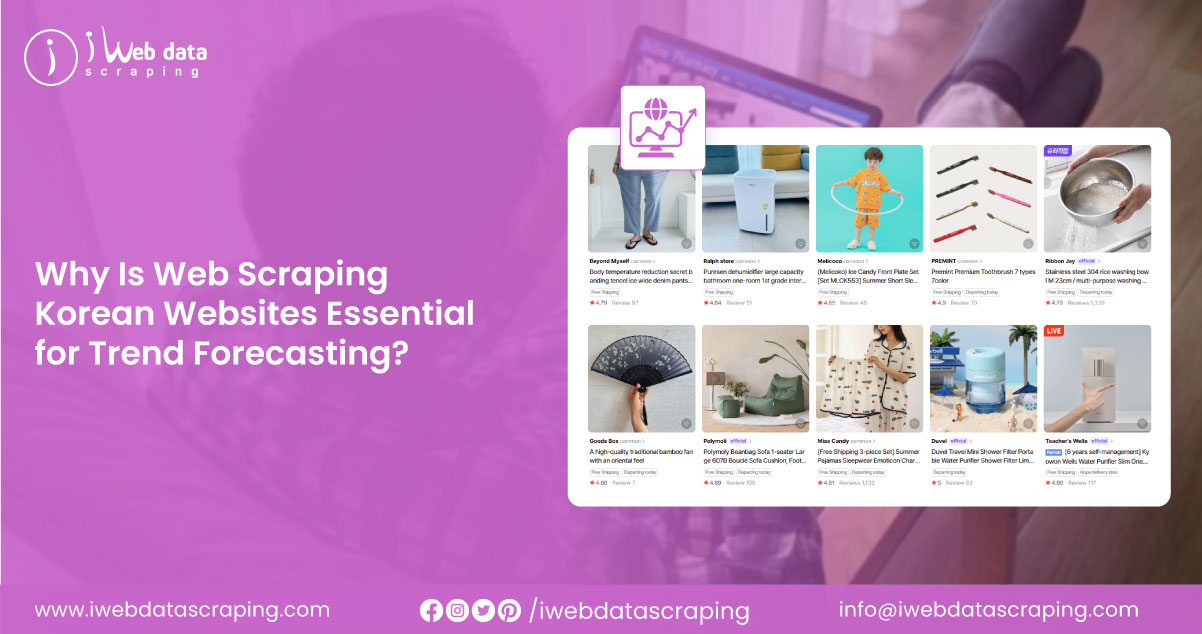
South Korea has firmly established itself as a global powerhouse in beauty, fashion, and technology trends. From K-Beauty's groundbreaking skincare innovations to sleek fashion aesthetics and advanced consumer electronics, the country offers a dynamic landscape ripe for analysis. For businesses and trend analysts worldwide, web scraping Korean websites presents an efficient and scalable approach to monitoring emerging product trends, tracking consumer behavior, and gaining competitive intelligence. With platforms like Wadiz, Shopee Korea, and Naver driving the country's digital commerce ecosystem, the ability to scrape Korean e-commerce data becomes vital for understanding local and global market shifts. Whether you're interested in K-beauty price scraping or tracking product performance through a Google Trends scraper for K-beauty, the insights extracted can inform product development, pricing models, and marketing strategies. By leveraging real-time data, brands can make more informed decisions and align their offerings with Korea's fast-evolving digital market.

South Korea is not just a regional hub; it is a trend incubator with influence that spans from Tokyo to Los Angeles. In 2024, South Korean beauty exports surpassed $10 billion, while K-fashion brands expanded their presence in online markets across over 40 countries. Tech startups are increasingly using crowdfunding platforms and e-commerce listings to test products with savvy Korean consumers.
South Korea is not just a regional hub; it is a trend incubator with influence that spans from Tokyo to Los Angeles. In 2024, South Korean beauty exports surpassed $10 billion, while K-fashion brands expanded their presence in online markets across over 40 countries. Tech startups are increasingly using crowdfunding platforms and e-commerce listings to test products with savvy Korean consumers.
With high-speed internet, smartphone-first behavior, and a vibrant influencer economy, South Korea's digital landscape provides early signals of global trends. Capturing that data through automated scraping enables international brands and analysts to respond more quickly to shifts in demand, design preferences, and consumer values.
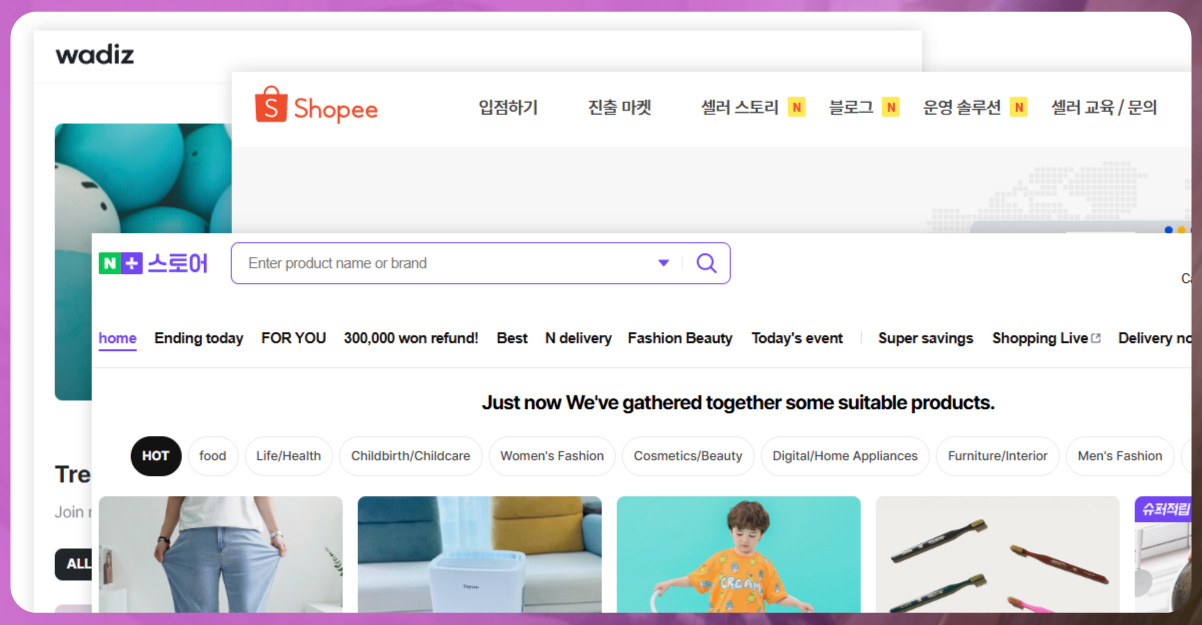
1. Wadiz – Korea's Leading Crowdfunding Platform
Wadiz is the South Korean equivalent of Kickstarter but with a uniquely Korean spin. It's one of the best places to discover emerging beauty brands, fashion startups, and experimental tech gadgets. Crowdfunding data offers early visibility into market intent and product innovation.
What to Scrape from Wadiz:
For example, a skincare brand like "Glowdeep," which launches on Wadiz, may not be available in stores yet, but is already gathering traction among Korean backers. Scraping this data reveals what consumers are excited about months before full market release.
2. Shopee Korea – E-Commerce Powerhouse
Shopee Korea is the local version of the pan-Asian Shopee platform, offering a vast catalog of products in beauty, fashion, and technology. Scraping Shopee Korea allows you to monitor bestsellers, user ratings, discount strategies, and real-time pricing.
Data Points to Extract:
Shopee's seasonal campaigns, such as "11.11" or "K-Beauty Week," often push thousands of new product listings that can be scraped and categorized for trend forecasting.
3. Naver – Korea's All-in-One Portal
Naver is not just a search engine—it's Google, YouTube, Reddit, Amazon, and Pinterest rolled into one, but tailored for Korean users. From blogs and news articles to e-commerce and Q&A forums, Naver offers a holistic view of Korean online behavior.
Scraping Targets on Naver:
Monitoring Naver's trending keywords in the Beauty and Tech categories can provide instant alerts on viral topics, such as the overnight success of a "lip tint" brand or the debut of a wearable smart ring.
Unlock Korea's digital trends—partner with us to power your strategy through smart, scalable data scraping.
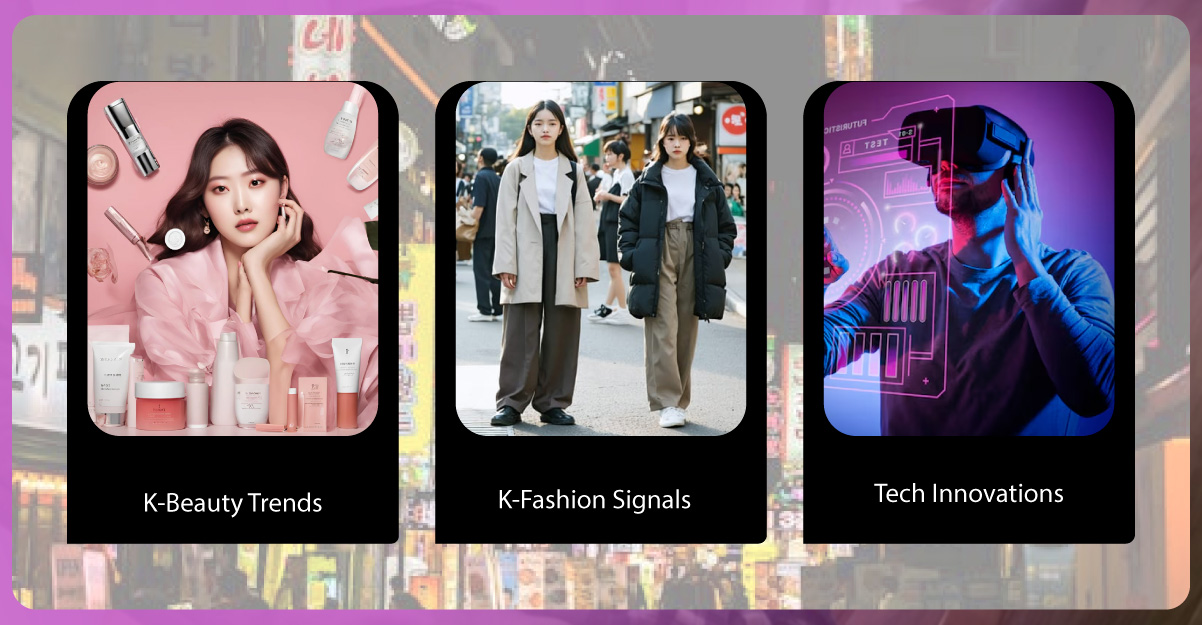
K-Beauty Trends
Korean beauty products have a reputation for innovation and effectiveness. Brands introduce hybrid formulations, such as toner-serums or sun-care-essences, which later get replicated globally. Through web scraping Korean beauty products , one can track:
In Q2 2025, for example, web scraping showed a spike in products containing fermented kombucha and ceramide lip balms. Wadiz had over 35 new kombucha-based skincare campaigns, while Shopee's bestsellers included Korean brands pushing "skin barrier repair" items.
By integrating K-Beauty review sentiment analysis, brands can measure consumer feedback across blogs, reviews, and social forums to identify which ingredients or formulations resonate most with consumers. In addition, efforts to scrape Korean e-commerce data help uncover pricing patterns, promotional timing, and buyer preferences across platforms, offering deep visibility into what's trending in the K-beauty space.
Korean fashion thrives on speed, minimalism, and influencer marketing. Web scraping Korean fashion trends enables retailers and analysts to decode real-time shifts in consumer preferences. Platforms like Shopee Korea and Naver Shopping reveal which aesthetics—such as streetwear, soft grunge, or genderless fashion—are gaining momentum across various age groups and demographics.
One notable trend in early 2025 was the rise in cargo skirts and oversized blazers, both of which were visible in the product rankings on Shopee and strongly endorsed within Naver Café communities. These pieces reflect the influence of retro-revival and utility styles among Gen Z consumers.
Through K-fashion trend analysis scraping, businesses can extract valuable metadata, including color tags, sizing details, material composition, and customer reviews. This empowers retailers to optimize inventory planning, launch trend-responsive collections, and implement hyper-local merchandising strategies in domestic and international markets.
South Korea is a launchpad for smart beauty devices, wearables, and IoT gadgets. Products like ultrasonic face cleansers or app-synced mirrors first gain traction here.
By scraping Wadiz's tech campaigns and Naver Shopping reviews, tech companies can detect:
For instance, an innovative mask that adjusts humidity levels based on skin condition saw record funding on Wadiz in early 2025 and later appeared across Shopee with localized names.
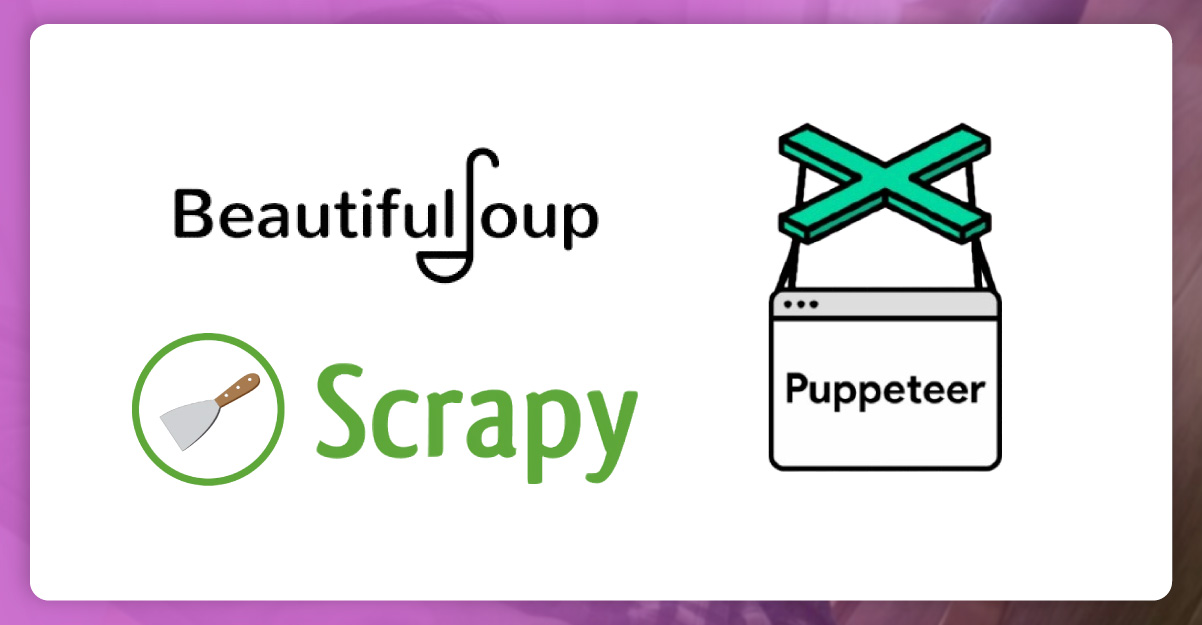
While much of Korea's web content is in Korean, scraping tools with built-in translation capabilities (e.g., utilizing the Google Translate API or Naver's Papago API) make it feasible to extract usable English-language data from the source material. Moreover, image recognition models can parse product specs and trend visuals when text-based data is insufficient. Scraping structured sites like Wadiz or Shopee Korea is relatively straightforward with tools like BeautifulSoup, Scrapy, or Puppeteer, especially when platforms offer clear product grids or pagination. For more dynamic elements, such as Naver's search result pages that load through AJAX, Selenium-based approaches offer more control and flexibility, particularly for Korean tech product scraping, where specs, reviews, and launch details are buried in JavaScript-rendered elements.
To delve deeper into product reviews, unboxing videos, or public sentiment, many analysts scrape Korean tech blog data, drawing from Naver Blog or influencer-run domains to assess community interest in gadgets, smart devices, or next-generation wearables.
The insights gained from scraping Korean websites go beyond academic interest—they're directly applicable to international business growth.
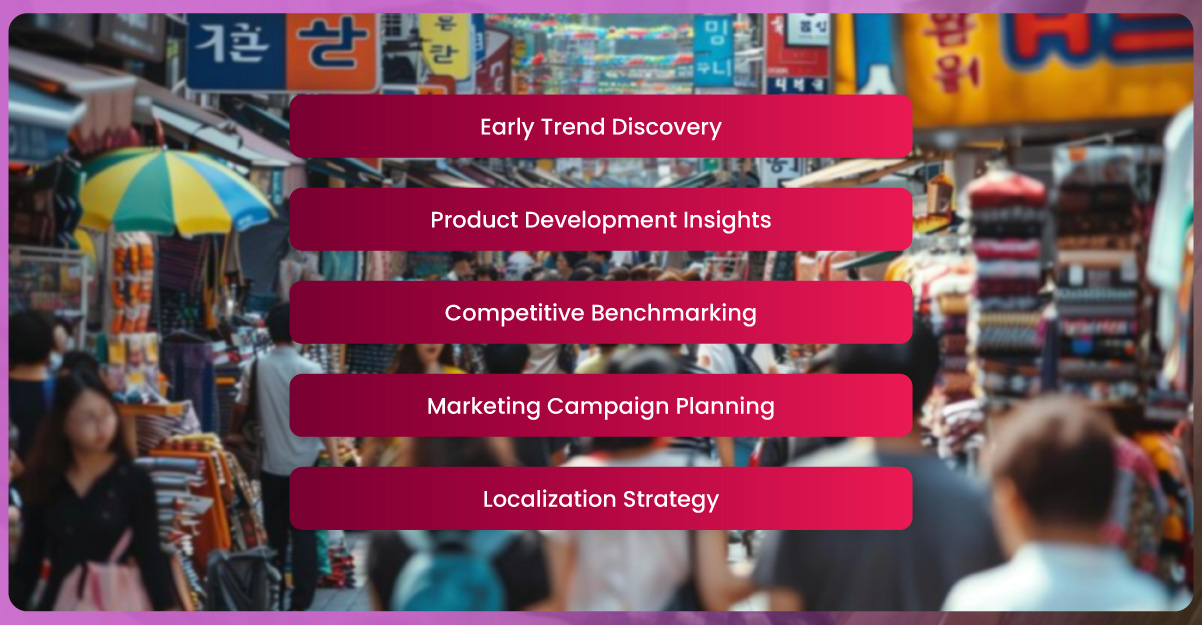
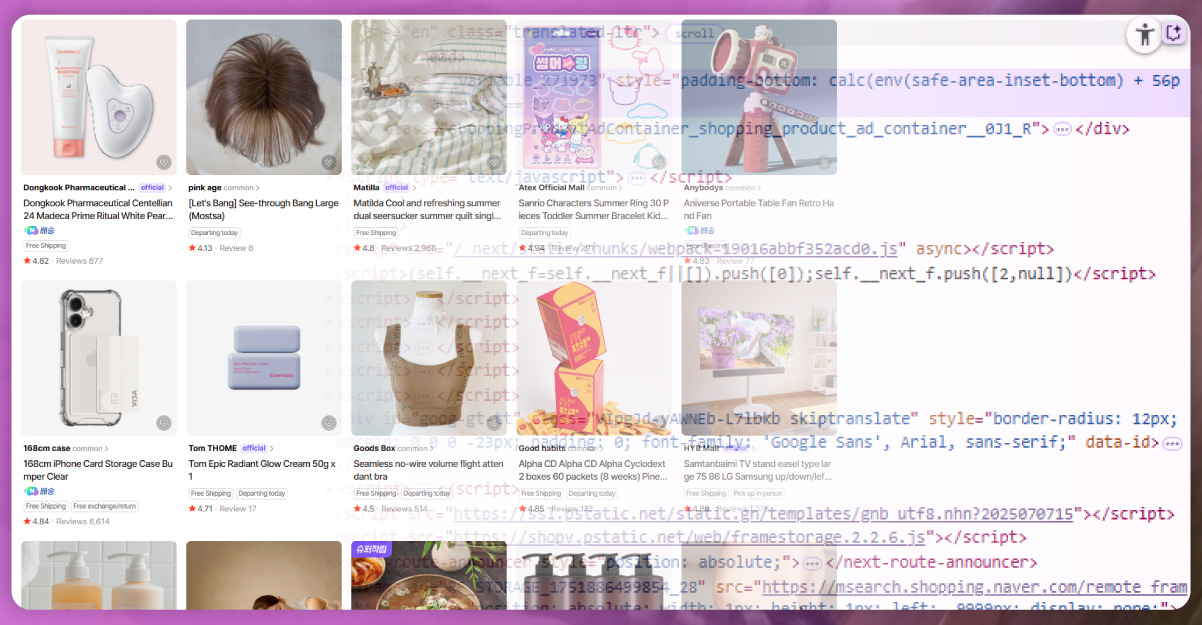
When scraping Korean websites, it's important to use ethical scraping techniques:
It's also wise to rotate proxies, handle rate limits, and simulate browser behavior to maintain access to dynamic content, especially for JavaScript-heavy platforms like Shopee.
In a digital-first era where visual aesthetics, consumer habits, and microtrends shift rapidly, web scraping Korean websites offers a critical advantage. Platforms like Wadiz, Shopee Korea, and Naver are more than retail hubs—they are real-time mirrors of Korea's evolving cultural tastes and consumer behavior.
By investing in automated data extraction across the beauty, fashion, and tech segments, global businesses can tap into South Korea's innovation pipeline, respond more quickly to emerging needs, and shape their strategies around what's next, not just what's currently available. Leveraging e-commerce data extraction services enables companies to efficiently monitor shifts in product demand, track influencer-led movements, and price competitively in real-time. Whether you're launching a new skincare line, designing your next fashion collection, or importing the next big gadget, the answers may already be coded into Korea's digital footprint. eCommerce data intelligence services help transform that raw data into actionable strategy, especially when tuned for web scraping Korean tech trends, where consumer excitement often signals what the world will want tomorrow. All you have to do is scrape.
Experience top-notch web scraping service and mobile app scraping solutions with iWeb Data Scraping. Our skilled team excels in extracting various data sets, including retail store locations and beyond. Connect with us today to learn how our customized services can address your unique project needs, delivering the highest efficiency and dependability for all your data requirements.